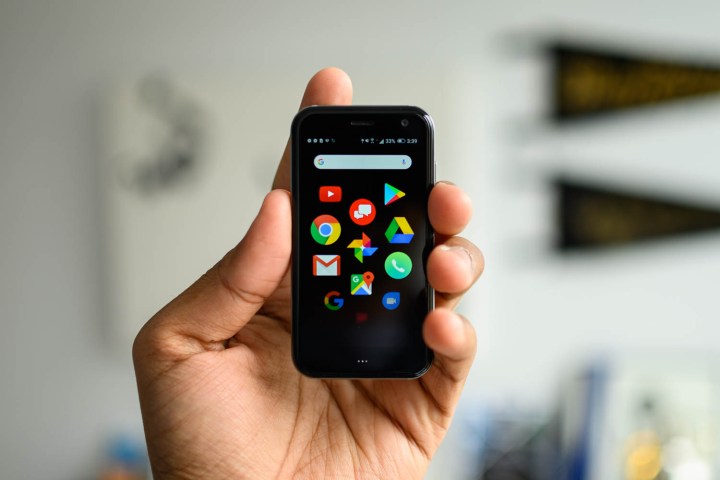
We live in the era of the reboot. But forget movie reboots — we’re talking about phone reboots. BlackBerry is still launching phones with physical keyboards, Nokia is back from the dead, and now there’s the reboot of the Palm. But this time around, there is no association with its predecessors other than its name. It is, however, manufactured by TCL.
Essentially, the Palm is a smartphone, but its main purpose is to disconnect you from technology for a bit. It syncs to your primary phone so you receive all your notifications and calls, but its Life Mode feature silences all alerts until you wake the screen. For an in-depth look at the Palm, check out our review. Otherwise, here are the key points you need to know.
Price and availability
The Palm comes in two flavors. The connected version is available exclusively through Verizon. It requires a second smartphone to work, and you’ll need to subscribe to a data-only plan from Verizon so it can become your second phone. It costs $350 at its full retail price but you can get it for $250 if you sign up for a two-year commitment. The data-only plan will set you back $10 per month, which shares the data from your current smartphone plan and lets you receive texts on both your phones.
The second version of the Palm is the stand-alone model, also called the unlocked Palm. It’s available from the company’s website, and it means you can use the Palm as your only phone because you can pop your SIM into it. It works on AT&T, T-Mobile, and Verizon, but not Sprint. The hardware is otherwise the same as the connected Palm. It’s $350. You can read about our experience using the stand-alone Palm for more details.
Design and display
The Palm is not only extremely tiny, but has a sleek design — it even bears a striking resemblance to the iPhone XS from the back. On the front is a 3.3-inch HD (720p) LCD display with 445 pixels per inch. On the right edge are a power button and SIM tray.
While it is made of aluminum, both the front and back are coated with Corning Gorilla Glass 3. It also comes in two color options: Silver and gold.
Specs and software update
Under the hood is a Qualcomm Snapdragon 435 processor coupled with 32GB of storage and 3GB of RAM.
On the back of the Palm, you’ll find a 12-megapixel camera with flash and an 8-megapixel front-facing camera. While there’s no fingerprint sensor for security, the Palm instead offers a facial recognition feature to unlock your device.
Since it is also supposed to act as a wearable, the Palm has a few sensors built-in. As with most advanced fitness trackers, it includes a G-sensor to measure acceleration, GPS, a proximity sensor, eCompass, and gyroscope. But if you want to have a visual of your fitness metrics throughout the day, you’ll have to download a third-party app via the Google Play Store.
There’s also a 300mAh battery that will not get you through a day with medium to high use. Battery life deplete faster if you use the Palm while working out — using the built-in GPS and streaming music over LTE will get you about three hours. The device is said to charge quickly, though — it should only take you half an hour to reach 50 percent, and a little over an hour to fully charge it.
In terms of its operating system, the Palm is powered by Android 8.1 Oreo. If you pair it with an iPhone, the only service that won’t work is iMessage. Palm has since pushed an update to the Palm that claims to improve the battery life as well as the camera quality.
Life Mode feature
To help you balance out your smartphone usage, the Palm includes a feature called “Life Mode.” When turned on, you won’t receive any calls, texts, or notifications as long as the screen is turned off. To see what you’ve missed, you can scroll through your alerts once you wake the screen. You can turn it on and off by swiping down on the display and tapping on the palm tree icon. You can also choose to turn off the feature for a few hours when you need to use the device for longer periods of time.
Updated on June 24, 2019: Added information about the stand-alone Palm and tweaked language.



